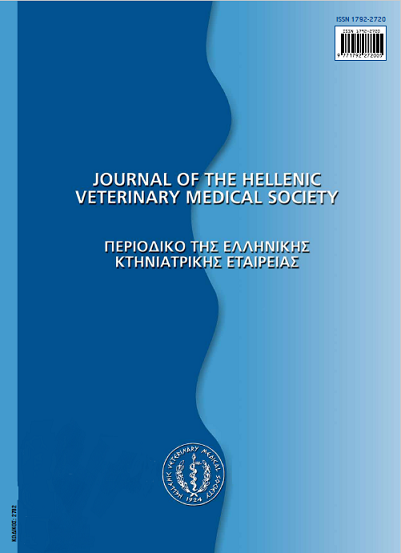Occurrence of aflatoxins in milk and their effects on reproduction
Abstract
The aflatoxins are toxic metabolites of the fungi Aspergillus flavus and Aspergillus parasiticus. These fungi invade the forages and under suitable conditions produce aflatoxins (Bl, B2, Gl, G2). The consumption of aflatoxins by the animals results in various pathological conditions (aflatoxicoses), with symptoms that vary depending on the species of animal, the age, the degree of forage invasion by the fungi and the quantity of the consumed feed. Nowadays, researchers pay more attention to the aflatoxins, because the latter do occur in many parts of the world. The regions more affected by aflatoxins are those with tropic or subtropic climate, since the levels of humidity and temperature play an important role in fungi's growth. The consumption of anatoxin Bl results in the excretion of aflatoxin Ml into the milk. Ml is one of Bl's metabolites and in some cases it is detected in concentrations higher than the maximum desirable limits fixed by each state, making the milk inappropriate for consumption. Furthermore, there are many reports about the effects of aflatoxins on the reproductive system. Sexual maturation, growth and maturation of the follicles, levels of hormones, gestation, growth of foetus are some of the parameters that are possibly influenced by aflatoxins. Regarding the genital system of male, most reports are related with the likely effect of aflatoxins on the size and weight of the genital organs, on spermatogenesis, on the number and morphology of spermatozoa, as well as on the levels of hormones.
Article Details
- Come citare
-
KOUROUSEKOS (Γ. Δ. ΚΟΥΡΟΥΣΕΚΟΣ) G. D., & LYMBEROPOULOS (Α. Γ. ΛΥΜΠΕΡΟΠΟΥΛΟΣ) A. G. (2017). Occurrence of aflatoxins in milk and their effects on reproduction. Journal of the Hellenic Veterinary Medical Society, 58(4), 306–312. https://doi.org/10.12681/jhvms.14994
- Fascicolo
- V. 58 N. 4 (2007)
- Sezione
- Review Articles
Authors who publish with this journal agree to the following terms:
· Authors retain copyright and grant the journal right of first publication with the work simultaneously licensed under a Creative Commons Attribution Non-Commercial License that allows others to share the work with an acknowledgement of the work's authorship and initial publication in this journal.
· Authors are able to enter into separate, additional contractual arrangements for the non-exclusive distribution of the journal's published version of the work (e.g. post it to an institutional repository or publish it in a book), with an acknowledgement of its initial publication in this journal.
· Authors are permitted and encouraged to post their work online (preferably in institutional repositories or on their website) prior to and during the submission process, as it can lead to productive exchanges, as well as earlier and greater citation of published work.



